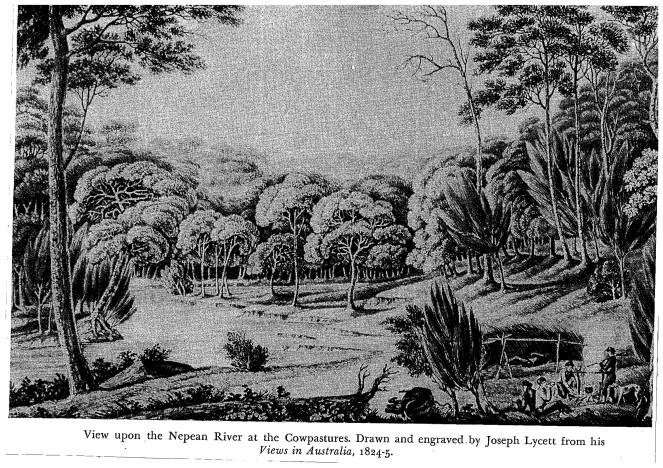What is the value of volunteering at the Camden Museum?
According to the latest research, the value of unpaid voluntary labour to the Camden Museum is worth around $580,000 a year.
Across an ordinary week, volunteers contribute around 240 hours of unpaid voluntary work to the Camden Museum.
In November 2021, the Australian Bureau of Statistics valued an hour of voluntary labour at A$46.62. (Funding Centre 2023)
Of course, the hourly rate greatly increases when the Camden Historical Society hires professional labour. So, the rate of $46.62 is probably an undervaluation. Specialist museum consultants can charge $1000 per day and more.
Volunteer survey at the museum
In 2018, Camden Historical Society President Dr Ian Willis conducted a brief survey of volunteers at the Camden Museum.
He was interested in the range of volunteer duties and the number of unpaid hours worked.
He found that Camden Museum volunteers and members of the Camden Historical Society, which manages the museum, do a host of unpaid activities.
The activities include: front welcome desk; tours; general administration; research; data entry; social media; writing; filing; committee work; travel; cataloguing; and other sundry duties.
This unpaid labour is essential to keep the museum open and the collection and archives in good condition.
Volunteering is an essential part of the wider society and is generally undervalued by government, businesses and volunteers themselves.
The most obvious unpaid labour is staffing the front desk to welcome visitors to the museum. The museum is open from 11am to 4pm on Thursday to Sunday.
Other unpaid voluntary work takes place behind the scenes, away from the public gaze.
Writing an article for the Back Page of The District Reporter, around 800 words, can take between 15 to 25 hours.
Value of volunteering calculator
The Centre for Volunteering has created a value of volunteering calculator.
When the Camden Historical Society’s weekly 240 hours were entered into the calculator, the annualised value calculated was A$590,304. This gives an hourly rate of A$47.41, assuming that most of the volunteers were between the ages of 55 and 64.
The Centre for Voluntary states:
This useful tool is fully compliant for organisations reporting the fair value of volunteering under the Australian Accounting Standard (AASB1058) Income of Not-for-Profit Entities.
The replacement cost of a volunteer is calculated using the average hourly part-time wage of a person of their age in their state of residence, plus 15% employer on-costs (inclusive of superannuation, payroll tax and administration expenses).
https://www.volunteering.com.au/resources-tools/cost-of-volunteering-calculator/
In-kind contributions
Valuing volunteers for in-kind contributions can be challenging to figure out $ values for volunteer hours.
This figure is often required for grant applications.
Value of volunteering to the Australian economy
Up-to-date research on what volunteering is worth to the Australian economy is either out-of-date or difficult to find.
One report from Flinders University in 2014 stated that volunteering was worth A$290 billion to Australia’s economic and social well-being, including the value of lives saved and emotional well-being.
According to Volunteering Australia, there are about 6 million volunteers.
The impact of Covid-19 has seen a decline in overall volunteering across the country.
According to the latest research in 2022 (UoS):
The ANU Centre for Social Research and Methods (CSRM) estimated a drop from 36% in 2019 to 26.7% in April 2022 in the proportion of adults who had volunteered formally over the 12 months prior to the time of survey.
https://www.sydney.edu.au/content/dam/corporate/documents/brain-and-mind-centre/mental-wealth/mwi_the-decline-in-volunteering_final_clean-(181122).pdf

Benefits of volunteering
There are a host of benefits to volunteering.
According to Health Direct, volunteering can:
- give you a sense of achievement and purpose.
- help you feel part of a community.
- help you feel better about yourself by improving your self-esteem and confidence.
- help you share your talents, learn new skills and create a better work-life balance.
- help combat stress, loneliness, social isolation and depression.
- help you meet new people, which can help you feel more connected and valued.
https://www.healthdirect.gov.au/benefits-of-volunteering
Legacy
The museum and the historical society are completely run by unpaid voluntary labour.
The Camden Museum would be forced to close without the generous contribution of the unpaid volunteers.
References
Funding Centre 2023, ‘Assigning value to your volunteer labour’. Funding Centre, https://explore.fundingcentre.com.au/help-sheets/valuing-volunteer-labour











































































You must be logged in to post a comment.